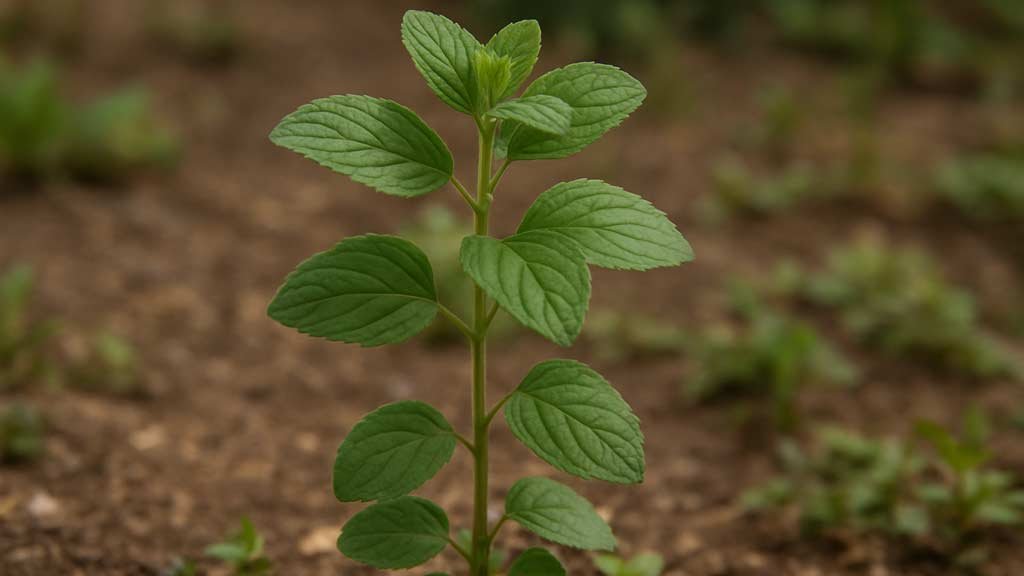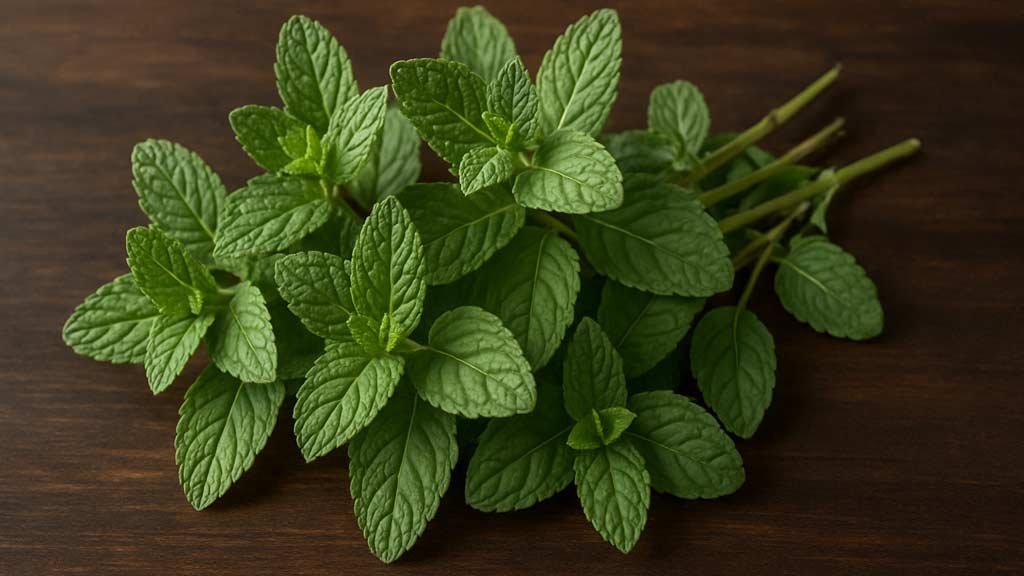A Fresh, Healing Aroma
Yerba Buena, a fragrant herb widely recognized in traditional medicine, has been cherished for centuries for its cooling aroma and soothing properties. Its name literally means “good herb,” and anyone who has brushed past a patch can attest to the refreshing scent that seems to lift your spirits immediately. The leaves are tender, vibrant green, and release a crisp, minty fragrance that tingles slightly on the nose—a scent that promises relief before you even take a sip of tea.
It’s fascinating how certain plants can convey wellness through scent alone, isn’t it? Yerba Buena is one such plant.
Table of Contents
Nutritional and Bioactive Components
Beyond the aroma, Yerba Buena is rich in compounds that contribute to its medicinal properties. The leaves contain:
- Menthol: Provides cooling, analgesic effects, commonly used for headaches and muscle relief
- Flavonoids: Act as antioxidants, reducing cellular stress
- Tannins: Offer astringent properties helpful for gastrointestinal discomfort
- Essential oils: Including limonene and pulegone, which aid digestion and reduce inflammation
The combination of these components makes Yerba Buena a versatile herb—useful in teas, infusions, and even culinary applications.
How It Works
Menthol, for instance, has a dual role: it interacts with cold-sensitive receptors to provide a cooling sensation and can relax smooth muscles in the digestive tract. Flavonoids act as antioxidants, neutralizing free radicals and contributing to overall health. Tannins help tighten irritated tissues, reducing inflammation in the gut and easing minor stomach upsets.
It’s almost like the plant knows exactly how to calm both your stomach and your mind.
Traditional Uses for Stomach Relief
For centuries, Yerba Buena has been used to soothe gastrointestinal discomfort:
- Indigestion and bloating: The herb relaxes the digestive tract, reducing spasms
- Nausea: A gentle tea often alleviates queasy sensations
- Gas and cramping: Tannins and essential oils work synergistically to calm discomfort
A simple infusion—steeping fresh leaves in hot water for a few minutes—can provide immediate, gentle relief. Some people chew a leaf or two after meals, savoring the minty aroma as digestion eases.
Anecdotal Evidence
Many who grew up in households where Yerba Buena was common recount that just smelling the leaves or sipping a fresh tea eased queasy stomachs within minutes. It’s subtle, not instant, but reliable—a small ritual that brings comfort.
Headache Relief and Mental Clarity
Menthol’s analgesic properties extend beyond the digestive tract. When applied topically in the form of an infused oil or rubbed gently on the temples, Yerba Buena can help:
- Reduce tension headaches
- Improve circulation in the scalp
- Provide a refreshing, cooling sensation that alleviates stress
Drinking Yerba Buena tea also supports hydration and introduces calming aromas that may reduce mild headache triggers, particularly those linked to digestive discomfort or stress.
Practical Tips
- Brew a concentrated tea and sip slowly, inhaling the aroma
- Crush fresh leaves to release essential oils and rub onto temples (avoid eyes!)
- Combine with ginger or chamomile for added soothing effects
The herb is subtle yet effective, working quietly with the body rather than overpowering it with strong pharmaceutical effects.

Culinary Applications
Yerba Buena is also versatile in the kitchen. Its mild mint flavor complements both sweet and savory dishes:
- Add fresh leaves to fruit salads or desserts
- Infuse syrups for beverages or cocktails
- Incorporate into rice dishes or sauces for a fresh note
- Blend into smoothies for a digestive aid boost
The aroma and flavor are light enough not to dominate dishes but noticeable enough to provide a refreshing lift.
How to Grow and Harvest
Growing Yerba Buena is straightforward, making it accessible for home gardeners. It prefers:
- Partial shade with moist, well-draining soil
- Regular watering without waterlogging
- Occasional pruning to encourage bushier growth
Leaves can be harvested as needed; younger leaves tend to have a more delicate, sweeter flavor, while mature leaves are richer in essential oils. The plant can be grown indoors in pots or outdoors in gardens, providing a constant source of fresh, aromatic herb for culinary and medicinal use.
Sustainability and Preservation
- Dry leaves for teas or infusions to maintain year-round availability
- Store dried leaves in airtight containers to preserve aroma and potency
- Freeze fresh leaves for later use, maintaining essential oil content
Having a small patch at home ensures a fresh, reliable supply while minimizing environmental impact.
Combining Yerba Buena with Other Herbs
For enhanced therapeutic effects, Yerba Buena can be paired with other traditional herbs:
- Ginger: Enhances digestive support and reduces nausea
- Chamomile: Amplifies calming and anti-inflammatory properties
- Lemon balm: Supports relaxation and mild headache relief
- Peppermint: Reinforces minty aroma and digestive aid
These combinations are commonly used in herbal teas, providing layered flavors and synergistic medicinal effects.
Safety and Considerations
Yerba Buena is generally safe for most people when used in culinary or medicinal doses, but some precautions are wise:
- Avoid excessive consumption if prone to reflux, as minty oils may relax the lower esophageal sphincter
- Pregnant or breastfeeding women should consult healthcare professionals before using medicinally
- Use topical applications cautiously to prevent skin irritation
Respectful, moderate use ensures safe and effective benefits.
Lifestyle Integration
Incorporating Yerba Buena into daily routines is simple and enjoyable. Some ideas:
- Brew a tea mid-morning or after meals for digestive ease
- Chew a leaf during stressful moments to refresh and refocus
- Use in cooking for both flavor and subtle wellness support
- Make a small potted plant a centerpiece in the kitchen for easy access
It’s a plant that encourages mindfulness: you handle it, smell it, taste it, and feel the subtle effects unfolding.
Scientific Perspectives
Modern research supports many of the traditional uses:
- Menthol and essential oils exhibit antispasmodic effects in the gastrointestinal tract
- Flavonoids provide antioxidant and anti-inflammatory benefits
- In vitro studies suggest potential antimicrobial properties, which may contribute to overall digestive wellness
While more rigorous clinical trials are ongoing, the historical use combined with preliminary research reinforces Yerba Buena’s value as a digestive and headache-supporting herb.
Summary of Benefits
- Digestive support: Eases nausea, bloating, and cramping
- Headache relief: Cooling, tension-reducing effects
- Antioxidant protection: Flavonoids and essential oils
- Culinary versatility: Light, fresh flavor complements dishes
- Aromatic and sensory delight: Stimulates relaxation and focus
It’s a small plant, but its reach extends into multiple facets of wellbeing, offering both immediate comfort and gentle, cumulative health support.
Final Thoughts
Yerba Buena embodies the philosophy that wellness can be simple, gentle, and integrated into daily life. Its refreshing aroma, soothing flavor, and array of medicinal properties make it a reliable companion for stomach discomfort and headaches. Its subtlety is elegant: it doesn’t demand attention but quietly nurtures the body, mind, and senses.
Article Sources
At AncientHerbsWisdom, our content relies on reputable sources, including peer-reviewed studies, to substantiate the information presented in our articles. Our primary objective is to ensure our content is thoroughly fact-checked, maintaining a commitment to accuracy, reliability, and trustworthiness.
- Rodríguez, J. P. (2024). Pharmacologic activities of Yerba Buena (Mentha x villosa): A review. Acta Medica Philippina, 58(1), 1–9. https://doi.org/10.47895/amp.v58i1.11694033
- Stearns Farm CSA. (2015, June 29). Herb notes: Using shiso and yerba buena. Retrieved from https://stearnsfarmcsa.org/2015/06/29/herb-notes-using-shiso-and-yerba-buena/
- Wikipedia contributors. (2023, December 27). Yerba buena. Wikipedia. Retrieved from https://en.wikipedia.org/wiki/Yerba_buena
- Wikipedia contributors. (2023, December 27). Eau de Cologne mint. Wikipedia. Retrieved from https://en.wikipedia.org/wiki/Eau_de_Cologne_mint
- Wikipedia contributors. (2023, December 27). Mentha citrata. Wikipedia. Retrieved from https://es.wikipedia.org/wiki/Mentha_citrata

